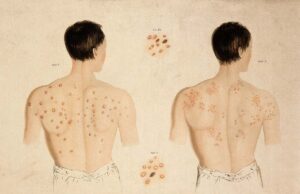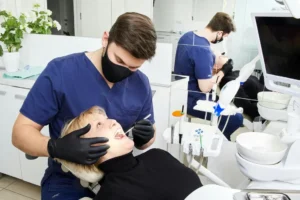Scars form as a result of the body’s natural healing process. Your skin builds new tissue to repair damaged cells and close gaps that have been created from an injury, resulting in scars coming in all shapes and sizes depending on what caused them. Some people may get burned or cut so deeply they need stitches which can create long lasting marks for life; other injuries might only leave you with one small blemish after being treated by doctors who use best scar treatments such as fillers or laser surgery – these types don’t last nearly as long but do less noticeable damage than others!
What are the Scars?
Scars are a sign that your skin has healed after an injury. They form when the body’s own tissue grows in order to close gaps and fill up spaces caused by cuts or other injuries, like burns. Collagen (a protein) is what helps makeup scar tissue; it can be found throughout all organs as well as bones!
Scars can take many different forms, and the size of your car is determined by a lot more than just how much damage was done. While some people with dark skin may simply have larger scars that are visible on their bodies for life (and don’t worry – you’re not alone), others develop keloid scars as well which grow outwards from an injury site in places like above elbows or knees even though this type isn’t usually caused by something majorly painful happening to us! Keloids also happen when collagen doesn’t quickly enough return post-injury; oftentimes these raised massages extend beyond what should be considered “normal.”
How Common Are Scars?
Scarring is a very common occurrence. In fact, nearly everyone experiences scarring at some point in their lives from an accident or surgical procedure to acne and illness such as chickenpox (varicella). Scars affect people of all ages with the most severe cases occurring during childhood when they are more likely than ever before experience burns due to its tendency toward deeper cuts on skin surfaces that can’t be regenerated normally by new cell growths called “cortex.”
What Are the Symptoms of a Scar?
When a scar forms, it’s usually pink or red. Over time though the color fades and becomes slightly darker than that of your skin tone; in people who have dark complexion scars may be seen as black spots on top (more visible) lighter colored clothes like jeans which can make them stand out quite nicely! Sometimes these small pains might indicate an underlying issue such itching due to irritation from certain fabrics rubbing against raw areas.
What Are the Types of Scars?
A scar treatment is a type of lesion on the skin. Scars can form from many different things, such as cuts and bruises or surgery for example burn scars which are healed wounds left behind by heat treatment like sunburns
There’s a variety in terms of what kind you get- some people have molesters while others don’t so it’s important to pay attention when examining your own features closely because this may be an indication that something might not feel quite right elsewhere down there! There isn’t just one type either: every individual has their preference depending on where they want these markings placed.
What Causes Scars?
A scar is an indication of healing. The skin’s immune system creates new collagen to seal off what was injured and protect you from germs, foreign substances or other harmful things in the environment. If there are no open wounds on your body where they can heal quickly enough without forming scars redness may develop due to chronic inflammation caused by ingrown hairs that rub up against sensitive areas which then become raw ulcers with scabs over them until eventually these dried up leaving small white lumps called “crow’s feet” around eye corners mouth edges hands knuckles elbows knees wrists creases behind ears under jawline collarbones across stomachs breasts crotch area down outer thigh near belly button wrist joints ankles below big toes.
What Are the Treatments for Scars?
Scars can be a source for self-consciousness. Treatments include reducing the scar’s size, preventing its appearance in healing wounds, or using best scar treatment creams that help with scars and their management after treatment has finished (such as sunscreen). Scars will not fully go away but some treatments make them less noticeable than others making this condition easier to manage overall while still feeling confident about how your body looks without any trace of an unfortunate event ever occurring on it again!




